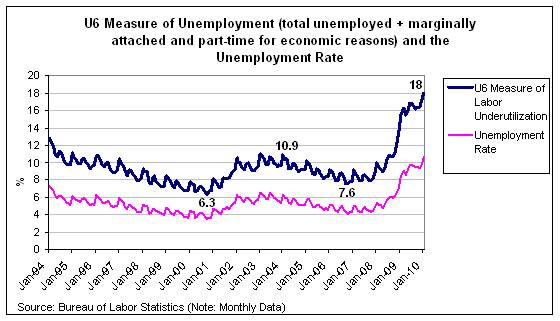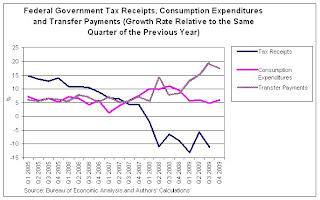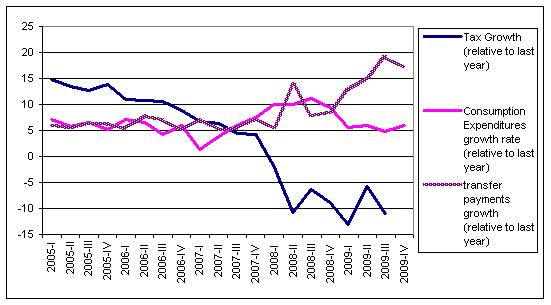By Michael Hudson and Jeff Summers
While most of the world’s press focuses on Greece (and also Spain, Ireland and Portugal) as the most troubled euro-areas, the much more severe, more devastating and downright deadly crisis in the post-Soviet economies scheduled to join the Eurozone somehow has escaped widespread notice.
No doubt that is because their experience is an indictment of the destructive horror of neoliberalism – and of Europe’s policy of treating these countries not as promised, not as helping them develop along Western European lines, but as areas to be colonized as export markets and bank markets, stripped of their economic surpluses, their skilled labor and indeed, working-age labor generally, their real estate and buildings, and whatever was inherited from the Soviet era.
Latvia experienced one of the world’s worst economic crises. It is not only economic, but demographic. Its 25.5 percent plunge in GDP over just the past two years (almost 20 percent in this past year alone) is already the worst two-year drop on record. The IMF’s own rosy forecasts anticipate a further drop of 4 percent, which would place the Latvian economic collapse ahead of the United States’ Great Depression The bad news does not end there, however. The IMF projects that 2009 will see a total capital and financial account deficit of 4.2 billion euros, with an additional 1.5 billion euros, or 9 percent of GDP, leaving the country in 2010.
Moreover, the Latvian government is rapidly accumulating debt. From just 7.9 percent of GDP in 2007, Latvia’s debt is projected to be 74 percent of GDP for this year, supposedly stabilizing at 89 percent in 2014 in the best-case IMF scenario. This would place it far outside the debt Maastricht debt limits for adopting the euro. Yet achieving entry into the eurozone has been the chief pretext of the Latvia’s Central Bank for the painful austerity measures necessary to keep its currency peg. Maintaining that peg has burned through mountains of currency reserves that otherwise could have been invested in its domestic economy.
Yet nobody in the West is asking why Latvia has suffered this fate, so typical of the Baltics and other post-Soviet economies but only slightly more extreme. Nearly twenty years since these countries achieved freedom from the old USSR in 1991, the Soviet system hardly can be blamed as the sole cause of their problems. Not even corruption alone can be blamed – a legacy of the late Soviet period’s dissolution, to be sure, but magnified, intensified and even encouraged in the kleptocratic form that has provided such rich pickings for Western bankers and investors. It was Western neoliberals who financialized these economies with the “business friendly reforms” so loudly applauded by the World Bank, Washington and Brussels.
Far lower levels of corruption obviously are to be desired (but whom else would the West trust?), but dramatically reducing it would perhaps only improve matters up to the level of Estonia’s road into euro-debt peonage. These neighboring Baltic counties likewise have suffered dramatic unemployment, reduced growth, declining health standards and emigration, in sharp contrast to Scandinavia and Finland.
Joseph Stiglitz, James Tobin and other economists in the West’s public eye have began to explain that there is something radically wrong with the financialized order imported by Western ideological salesmen in the wake of the Soviet collapse. Neoliberal economics certainly was not the road that Western Europe took after World War II. It was a new experiment, whose dress rehearsal was imposed initially at gunpoint by the Chicago Boys in Chile. In Latvia, the advisors were from Georgetown, but the ideology was the same: dismantle the government and turn it over to political insiders.
For the post-Soviet application of this cruel experiment, the idea was to give Western banks, financial investors, and ostensibly “free market” economists (so-called because they gave away public property freely, untaxed it, and gave new meaning to the term “free lunch”) were given a free hand in much of the Soviet bloc to design entire economies. And as matters turned out, every design was the same. The names of individuals were different, but most were linked to and financed by Washington, the World Bank and European Union. And sponsored by the West’s financial institutions, one hardly should be surprised that they came up with a design in their own financial interest.
It was a plan that no democratic government in the West could have passed. Public enterprises were doled out to individuals trusted to sell out quickly to Western investors and local oligarchs who would move their money safely offshore into the Western havens. To cap matters, local tax systems were created that left the traditional two major Western bank customers – real estate and natural infrastructure monopolies – nearly tax free. This left their rents and monopoly pricing “free” of to be paid to Western banks as interest rather than used as the domestic tax base to help reconstruct these economies.
There were almost no commercial banks in the Soviet Union. Rather than helping these countries create banks of their own, Western Europe encouraged its own banks to create credit and load down these economies with interest charges – in euros and other hard currencies for the banks’ protection. This violated a prime axiom of finance: never denominate your debts in hard currency when your revenue is denominated in a softer one. But as in the case of Iceland, Europe promised to help these countries join the Euro by suitably helpful policies. The “reforms” consisted in showing them how to shift taxes off business and real estate (the prime bank customers) onto labor, not only as a flat income tax but a flat “social service” tax, so as to pay Social Security and health care as a user fee by labor rather than funded out of the general budget largely by the higher tax brackets.
Unlike the West, there was no significant property tax. This obliged governments to tax labor and industry. But unlike the West, there was no progressive income or wealth tax. Latvia had the equivalent of a 59 percent flat tax on labor in many cases. (American Congressional committee heads and their lobbyists can only dream of so punitive a tax on labor, so free a lunch for their main campaign contributors!) With a tax like this, European countries had nothing to fear from economies that emerged tax free with no property charges to burden their labor with taxes, low housing costs, low debt costs. These economies were poisoned from the outset. That is what made them so “free market” and “business friendly” from the vantage point of today’s Western economic orthodoxy.
Lacking the power to tax real estate and other property – or even to impose progressive taxation on the higher income brackets – governments were obliged to tax labor and industry. This trickle-down fiscal philosophy sharply increased the price of labor and capital, making industry and agriculture in neoliberalized economies so high-cost as to be uncompetitive with “Old Europe.” In effect the post-Soviet economies were turned into export zones for Old Europe’s industry and banking services.
Western Europe had developed by protecting its industry and labor, and taxing away the land rent and other revenue that had no counterpart in a necessary cost of production. The post-Soviet economies “freed” this revenue to be paid to Western European banks. These economies – debt-free in 1991 – were loaded down with debt, denominated in hard currencies, not their own. Western bank loans were not used to upgrade their capital investment, public investment and living standards. The great bulk of these loans were extended mainly against assets already in place, inherited from the Soviet period. New real estate construction did indeed take off, but the great bulk of it has now sunk into negative equity. And the Western banks are demanding that Latvia and the Baltics pay by squeezing out even more of an economic surplus with even more neoliberal “reforms” that threaten to drive even more of their labor abroad as their economies shrink and poverty spreads.
The pattern of a ruling kleptocracy at the top and an indebted work force – non- or weakly unionized, with few workplace protections – was applauded as a business-friendly model for the rest of the world to emulate. The post-Soviet economies were thoroughly “underdeveloped,” rendered hopelessly high-cost and generally unable to compete on anywhere near equal terms with their Western neighbors.
The result has been an economic experiment seemingly gone mad, a dystopia whose victims are now being blamed. Neoliberal trickle-down ideology – apparently being prepared for application to Europe and North America with an equally optimistic rhetoric – was so economically destructive that it is almost as if these nations were invaded militarily. So it is indeed time to start worrying about whether the Baltics may be a dress rehearsal for what we are about to see in the United States.
The word “reform” is now taking on a negative connotation in the Baltics, as it has in Russia. It has come to signify retrogression back to feudal dependency. But whereas feudal lords from Sweden and Germany ruled their Latvian manors by the power of landownership, they now control the Baltics by their foreign-currency mortgage loans against the region’s real estate. Debt peonage has replaced outright serfdom. Mortgages far in excess of actual market values, which have plunged by 50-70 percent in the past year (depending on housing type), also are far in excess of the ability of Latvian homeowners to pay. The volume of foreign-currency debt is far beyond what these countries can earn by exporting the products of their labor, industry and agriculture to Europe (which hardly wants any imports) or other regions of the world in which democratic governments are pledged to protect their labor force, not sell it out and subject it to unprecedented austerity programs – all in the name of “free markets.”
Several decades have passed since the neoliberal order was introduced, and the results are disastrous, if not almost a crime against humanity. Economic growth has not occurred. Soviet-era assets have simply been loaded down with debt. This is not how Western Europe developed after World War II, or earlier for the matter – or China most recently. These countries pursued the classical path of protection of domestic industry, public infrastructure spending, progressive taxation, public health and workplace safety regulations, legal prohibitions against insider dealing and looting – all anathema to neoliberal free-market ideology.
What is starkly at issue are the underlying assumptions of the world’s economic order. At the core of today’s crisis of economic theory and policy are the all but forgotten premises and guiding concepts of classical political economy. George Soros, Professor Stiglitz and others describe a global casino economy (which Soros certainly enriched himself by playing) in which finance has become detached from the process of wealth creation. The financial sector makes increasingly steep, even unpayably high claims on the real economy of goods and services.
This was the concern of the classical economists when they focused on the problem of rentiers, owners of property and special privilege whose revenues (with no counterpart in any necessary cost of production) led to a de facto tax on the economy – in this case, by imposing debt on it. Classical economists recognized the need to subordinate finance to the needs of the real economy. This was the philosophy that guided U.S. banking regulation in the 1930’s, and which West Europe and Japan followed from the 1950s through the 1970s to promote investment in manufacturing. Instead of checking the financial sector’s ability to engage in speculative excess, the United States overturned these regulations in the 1980s. From a bit below 5 percent of total U.S. profits in 1982, the financial sector’s after-tax profits rose to an unprecedented 41 per cent in 2007. In effect this zero-sum activity was an overhead “tax” on the economy.
Along with financial restructuring, the main item in the classical tool-kit was tax policy. The aim was to reward work and wealth creation, and to collect the “free lunch” resulting from “external” social economies as the natural tax base. This tax policy had the virtue of reducing the burden on earned income (wages and profits). Land was seen as supplied by nature without a labor-cost of production (and hence without cost value). But instead of making it the natural tax base, governments have permitted banks to load it down with debt, turning the rise in land’s rental value into interest charges. The result, in classical terminology, is a financial tax on society – revenue that society was supposed to collect as the tax base to invest in economic and social infrastructure to make society richer. The alternative has been to tax land and industrial capital. And what tax collectors have relinquished, banks now collect in the form of a rising price for land sites – a price for which buyers pay mortgage interest.
Classical economics could have predicted Latvia’s problems. With no curbs on finance or regulation of monopoly pricing, no industrial protection, privatization of the public domain to create “tollbooth economies,” and a tax policy that impoverishes labor and even industrial capital while rewarding speculators, Latvia’s economy has seen little economic development. What it has achieved – and what has won it such loud applause from the West – has been its willingness to rack up huge debts to subsidize its economic disaster. Latvia has too little industry, too little agricultural modernization, but over 9 billion lati in private debt – now at risk of being shifted onto the government’s balance sheet, just as has occurred with the U.S. bank bailouts.
If this credit had been extended productively to build Latvia’s economy, it would have been acceptable. But it was mostly unproductive, extended to fuel land-price inflation and luxury consumption, reducing Latvia to a state of near debt serfdom. In what Sarah Palin would call a “hopey-change thing,” the Bank of Latvia suggests that the bottom of the crisis has been reached. Exports finally have begun to pick up, but the economy is still in desperate straits. If current trends continue there will be no more Latvians left to inherit any economic revival. Unemployment still stands at more than 22 percent. Tens of thousands have left the country, and tens of thousands more have decided not to have children. This is a natural response to saddling the country with billions of lati in public and private debt. Latvia is not on a trajectory toward Western levels of affluence, and there is no way out of its current regressive tax policy and anti-labor, anti-industry and anti-agriculture neoliberalism being imposed so coercively by Brussels as a condition for bailing Latvia’s central bank out so that it can pay Swedish banks that have made such unproductive and parasitic loans.
Albert Einstein stated that “insanity [is] doing the same thing over and over again and expecting different results.” Latvia has employed the same self-destructive anti-government, anti-labor, anti-industrial, anti-agricultural “pro-Western” Washington Consensus for almost 20 years, and the results have become worse and worse. The task at hand now is to liberate the economy Latvia from its neoliberal road to neo-serfdom. One would think that the path selected would be the one charted by the classical 19th-century economists that guided the prosperity we see in the West and now also in East Asia. But this will require a change of economic philosophy – and that will require a change of government.
The question is, how will Europe and the West respond. Will it admit its error? Or will it brazen it out? Signs today are not promising. The West says that labor has not been impoverished enough, industry has not been starved enough, and economic the patient has not been bled enough.















